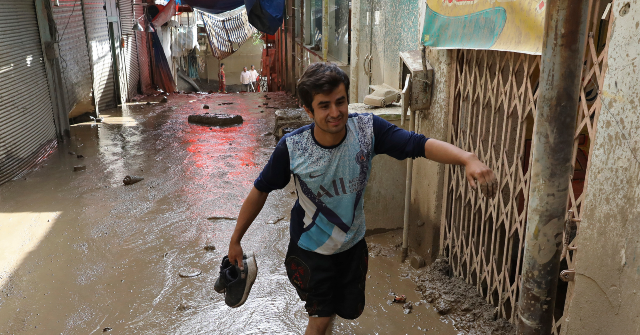Iran made an all-out effort last week to combat a severe drought by seeding the clouds with chemicals to produce rain. The technique appears to have worked all too well, as heavy rainfall caused flooding in portions of western Iran on Monday.
Iran grapples with chronic water shortages in the best of years, but the past six years have been among the worst, with chronic drought conditions so severe that partially evacuating the capital city of Tehran was on the table.
Writing at Forbes on Sunday, environmental scientist Kaveh Madani of the U.N. University Institute for Water, Environment, and Health — whose research has been focused on Iran’s “water bankruptcy” — argued that poor water management by the Iranian country has greatly exacerbated the problem:
For decades, Iranian decision-makers treated water as a limitless resource and environmental rights as negotiable. Water-intensive irrigated agriculture was promoted in some of the driest landscapes on earth in the name of food self-sufficiency, food security, and “resistance” to foreign pressure. Heavily subsidized water and electricity encouraged wasteful use and unrestricted pumping of groundwater. Dam building and inter-basin transfers became symbols of national pride and strength. Leaders had a “hydraulic mission”: putting every drop of water available across the nation into use and not allowing any drop of water to be “wasted” into the seas, lakes, and wetlands.
Madani further faulted the regime in Tehran for being too preoccupied with its “resistance economy” propaganda, perpetually putting off necessary reforms and blaming all of its problems on U.S. sanctions. The government constantly lies to its subjects about water availability and conceals data, thwarting citizens who might have taken private measures to ameliorate the drought. Iranian officials mutter conspiracy theories about “cloud theft” and “weather manipulation” instead of dealing with their problems.
The regime’s foolish and belligerent strategic blunders inflicted even more damage on Iran’s shaky water infrastructure. Iranian officials usually weave fantastic tales about humiliating Israel during their military exchanges over the past two years, but when he announced strict water rationing over the weekend, Energy Minister Abbas Alibadi admitted the nation’s water infrastructure was heavily damaged during the 12-day conflict with Israel in June.
On Monday, the regime began slathering the walls of Tehran with posters warning of severe water shortages and dry taps. Residents of the city reported going for days on end without water, and took umbrage when the city water company suggested they should buy their own pumps and storage tanks to handle emergency needs. The water company said the city’s reservoirs were down to five percent of their capacity.
Even the more “moderate” Iranian media outlets have been running damaging stories about “unqualified” water managers making foolish decisions. Something had to be done, and fast, so the regime embarked upon a massive cloud seeding program.
Cloud seeding is the chemical process of spreading salts through the clouds, usually with aircraft, in the hope that water vapor will condense around the salt particles. Other countries in the Middle East have used the technique successfully during times of crisis.
Increased rainfall was quickly observed in western and northwestern Iran, plus a bit of snow in the mountains north of Tehran where ski resorts are located. Then the rain kept coming, dumping heavy downpours upon parched earth and dry rivers hardened by the drought and in no shape to deal with the sudden moisture:
Water cascaded through the previously dry mountains, unleashing dangerous flash floods:
On Monday, Iran’s meteorological association issued flood warnings for six western provinces. The association observed that average rainfall is still over 80 percent below normal, even with the sudden heavy rains and flooding.
“In addition to cloud seeding’s heavy cost, the amount of rainfall it produces is nowhere near what is needed to solve our water crisis,” chief meteorologist Sahar Tajbakhsh said in a state television interview.
Unfortunately, conditions for cloud seeding were not favorable over Tehran, so grinding drought conditions persist in the capital city. City officials warned Tehran’s water supply could be exhausted within the next few weeks.
Read the full article here



